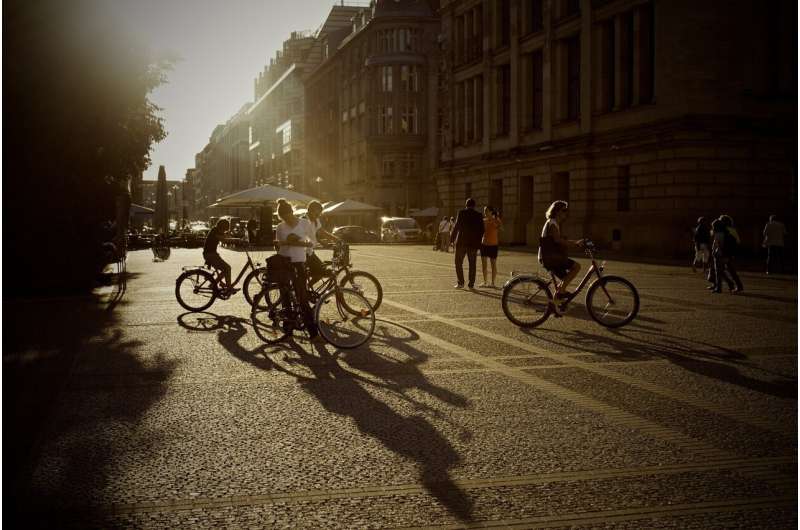This article has been reviewed according to Science X's editorial process and policies. Editors have highlighted the following attributes while ensuring the content's credibility:
fact-checked
proofread
It takes more than good cycle paths to get people cycling, says researcher

Getting people to cycle isn't just about building more and better cycle lanes, to include more demographics, urban planners need to consider factors other than infrastructure, says a Malmö University researcher.
"For environmental reasons, among others, we want more people to cycle, but today urban planning focuses more on those who already cycle and are physically fit; looking at how to build better cycle paths so that those who already cycle can cycle even faster," says Zahra Hamidi.
In her thesis, "Examining Inequalities in Cycling Motility," she examines attitudes towards cycling among a representative sample of residents in the Swedish cities of Gothenburg and Malmö. A total of 1,145 people answered questions such as: the availability of different forms of transport in the household, travel habits, and their attitudes towards cycling and considerations such as safety.
"If you want more groups to cycle, you can't just build more cycle paths," says Hamidi. She is interested in aspects related to individual experiences of, and attitudes towards, cycling. In her thesis, she studies dimensions that define a person's potential for cycling: access to a bicycle, ability and knowledge to cycle, whether cycling fits a self-image, whether there is a positive view of cycling in one's social network.
According to Hamidi, the potential for cycling depends on accessibility, knowledge and attitudes. Why do people choose to cycle or not? Is it fear or other beliefs that make people choose other means of transport?
"The study shows that higher income is linked to higher potential for cycling. For example, you need a smartphone to locate app-managed municipal bicycle docking stations."
Other factors include age, health and household type. The study shows that older people have lower potential for cycling and find bicycles less suitable for their needs and abilities. The study also shows that men generally report a higher level of cycling skills than women.
Hamidi believes that urban planners can use new technologies to include cyclists who do not have the same physical abilities as younger people. "Cyclists are not a homogenous group, and today there are many types of bikes that can make cycling easier for people with different abilities.
"It therefore needs to be recognized that there is a range of needs and preferences among cyclists. Those who need assistance to go out should perhaps be offered help. You may be able to afford to buy an electric bike, but you also need to feel that it's safe to cycle. There is a range of needs and preferences to consider," concludes Hamidi.
More information: Examining Inequalities in Cycling Motility: A Pathway Towards Cycling Justice (2023). DOI: 10.24834/isbn.9789178774210
Provided by Malmö University





















